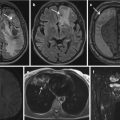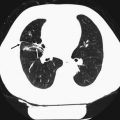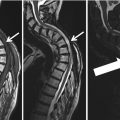(1)
Department of Diagnostic and Interventional Radiology, University of Tuebingen, Hoppe-Seyler-Straße 3, 72076 Tübingen, Germany
The main goal of population-based imaging is to gain insight into physiological and pathophysiological processes of individuals by assessing corresponding morphological and functional changes in the general population using imaging techniques. This approach is fundamentally different from the usual clinical approach, where the individual examination is in the center of attention and usually not directly related or compared to population-based imaging data. Therefore, specific technical and organizational prerequisites have to be met in order to successfully conduct population-based imaging studies. In this chapter, these prerequisites will be discussed concerning the underlying imaging modalities as well as aspects of data storage and data processing.
1 General Requirements
In the context of population-based imaging, the focus of attention is not directed onto individual participants but rather on the whole population. The most important technical goal is thus to obtain comparable data from each included individual in order to allow for a valid epidemiological analyses.
Concerning the data acquisition step, the following requirements have to be met.
First of all, the image acquisition procedure has to be performed in a standardized manner in order to ensure reproducible results. Standardization has different implications for the different available imaging modalities that will be discussed in detail below. In general however, it is of importance that imaging protocols as well as underlying hardware and software are kept constant over the entire course of the study. It is thus crucial to establish and optimize these aspects in detail (e.g., in a smaller pre-study) before initiating the actual data acquisition.
Another technical prerequisite of data acquisition is the assurance of stable data quality over time and over different imaging sites in multicenter studies. Depending on the underlying imaging modality, different factors can cause qualitative and quantitative changes in imaging data over time including technical degradation of the scanner or replacement of imaging technicians. Most population-based studies are conducted over relatively long time periods. It is thus mandatory to repeatedly perform quality assurance tests and to intervene when deviations exceed acceptable levels.
Concerning the data processing step, the basic requirements are similar to the data acquisition step, and in many cases, these two steps are interwoven and cannot be entirely separated. Thus, data processing has to be performed in a standardized way, and quality assurance has to be performed constantly. More than in the data acquisition part, however, data analysis is often performed by a large number of individual researchers and research groups with heterogeneous backgrounds. As a result, data analysis procedures can vary largely. In order to ensure good data quality in this context, a precise documentation of the data analysis procedures has to be provided (e.g., in the form of defined standard operating procedures). As an alternative, data processing can be performed automatically using suitable algorithms.
2 Imaging Modalities
Numerous imaging modalities are used in daily clinical practice to establish clinical diagnoses for single patients including conventional x-ray examinations, CT, ultrasound, MRI, and PET. When considering abovementioned general requirements, the suitability of these modalities for population-based imaging studies is not the same. The ideal imaging modality for population studies would have the following properties:
High informational content
Reliable standardization and quantification
Noninvasiveness (no radiation, no contrast agents, no adverse effects)
Short examination times, low cost, wide availability
Especially noninvasiveness is an important aspect that has to be considered when examining healthy volunteers.
In reality, this perfect modality does not exist. The suitability and applications of available modalities are discussed in the following.
2.1 Magnetic Resonance Imaging
The majority of recent population-based imaging studies rely on MR imaging due to various reasons.
First of all, MRI is not associated with diagnostic radiation exposure which makes it easier to justify its use in healthy volunteers. When considering typical MR contraindications (metal implants, claustrophobia, etc.), the possible risks for participants are minimal. More attention to possible adverse events has to be paid when intravenous contrast agents are used in MRI, which increased the risk of adverse events (especially hypersensitivity reactions), and requires for prior exclusion of certain populations (especially patients with impaired renal function).
A crucially important advantage of MRI compared to alternative modalities is its versatility. Virtually all anatomical structures can be assessed in detail. In addition, MRI allows for the measurement of functional tissue properties such as perfusion, diffusion, or oxygenation which allows for a detailed characterization of physiological and pathophysiological processes. To a certain degree, these functional data can be acquired in absolute quantities and thus be compared within and among individual participants.
A drawback of MRI is the relatively long examination times. A comprehensive whole-body MR study could easily last several hours. Typical whole-body protocols in ongoing population studies using MRI are restricted to about one hour of examination time which requires strict selection of single examination to be included. Novel MR imaging techniques promise accelerated examination, which may help to alleviate this challenge in the future.
A further limitation of MRI, especially compared to CT, is its susceptibility to artifacts resulting, e.g., from motion, magnetic field inhomogeneities, or sequence properties. Therefore, sequences included in an MR population study should be well tested and robust, and a good strategy for dealing with artifacts should be implemented.
In general, MR scanners are widely available and examination costs are high but manageable. It is however recommended that MR scanners within multicenter studies are of the exact same scanner type with the same field strength and hardware and software equipment. This is important as numerous studies have shown variations in image quality and quantitative imaging results between scanners of different vendors or even by the same vendor and different type. The scanner hardware and software setting should be kept constant during the entire course of the study in order to assure constant data properties even if this means that new technical developments from possible upgrades are missed.
Several possibilities exist in order to perform quality assurance on MR scanners, although this concept is not part of routine MR installations. The most widely accepted procedure is the repeated measurement of MR phantoms that allows for the analysis of scanner imaging properties. These phantom measurements can also be used for the purpose of cross-calibration between different scanner sites. Furthermore, basic image properties of study measurements (e.g., signal-to-noise ratio, signal intensities, etc.) can be quantified and compared.
Stay updated, free articles. Join our Telegram channel

Full access? Get Clinical Tree






